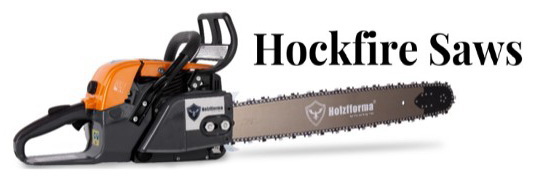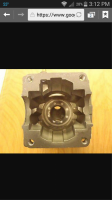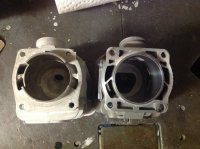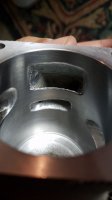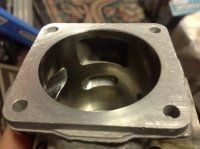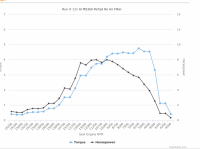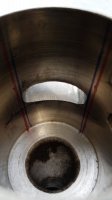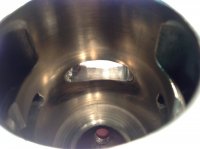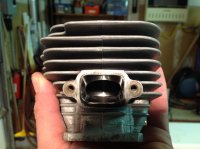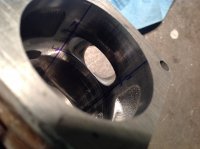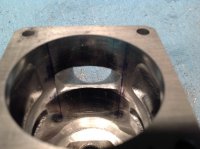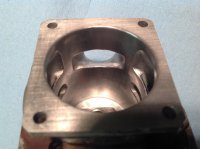So one can change the time and area of the transfer opening.
Let's say the exhaust is at 103 and I open the uppers at 113. That gives the transfers a lot of time to fill the cylinder with charge. But it also opens them very early and they won't flow, or will flow backwards, until the pressure in them exceeds exhaust pressure.
Stihl used this to their advantage on saws, I believe it was the 461, as a poor man's strato. The first part of the charge loop was actually burnt exhaust gasses that was "backstuffed" into the transfers. So instead of some raw charge going out the muffler, the beginning/lost part of the loop was actually burnt gasses.
So let's say I open the uppers at 130. Now the pressure is low enough and the case has compressed charge enough for the transfers to flow really well. But..., there's less time for them to fill the cylinder with charge.
So what's optimal? Too high and they backfill, to low and they don't fill enough. That's the $50k question and also where trail and error come into play. That's also why there are some good "recipes". Numbers are a part of the equation, and as
@jmssaws pointed out earlier, two saws with different numbers can run the same or two saws with the same numbers can run differently.
Case volume, number of transfers, placement in cylinder, direction, intake closing, shape, tunnel volume ,etc... all play a role in what's gonna work.
So when guys like
@Mastermind are offering you numbers, they are really doing you a huge favor. They are telling you what has worked for them after sometimes years of experimentation with certain models. You may not be able to grind like they do, but they cut a ton of the work out for you.
Another thing to always remember is that we think of the porting and ports as a function of one cycle at a time. These events are occurring so fast that they become
fluid. Inertia starts to play a role, so at higher rpm, there's already pressure waiting at the transfer opening before the piston is coming down. Some will argue that I'm wrong about this and Blair did show some negative pressure in the transfers in his book, but I've got my own thoughts on that.






